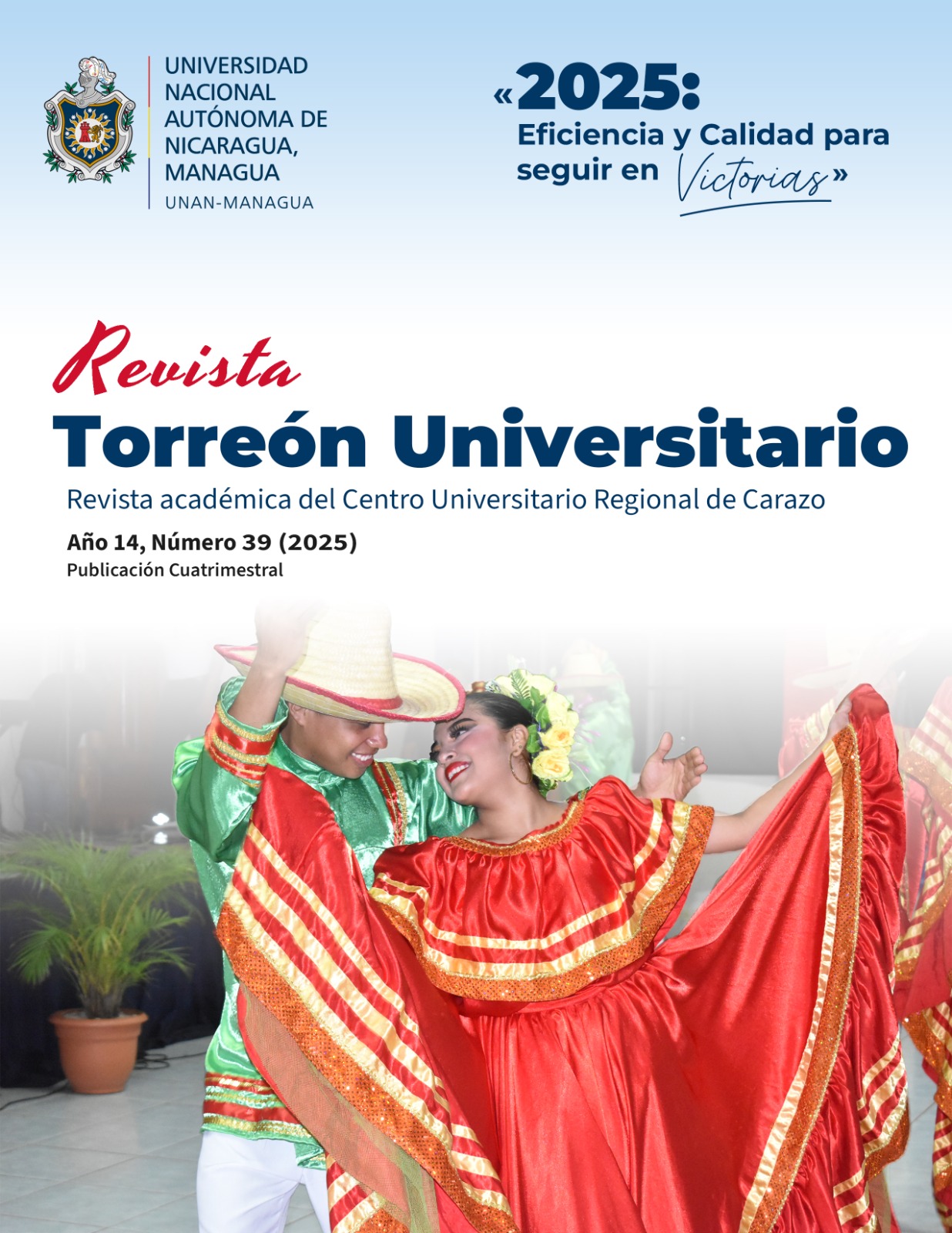Education in the field: contextualization of student permanence in the primary and secondary education modality.
DOI:
https://doi.org/10.5377/rtu.v14i39.20138Keywords:
Students, enrollment, indicator, rural communitiesAbstract
Distance education in the countryside is an action strategy implemented by the current government in the basic and middle education subsystems, in which the entire community of the country’s public schools participate to strengthen scientific and practical knowledge that promotes social development in rural communities. In this article, the indicator of permanence of students in the modality of primary and secondary distance education was analyzed taking as a reference the enrollment of the years 2021 and 2022, through a methodical process of scientific character. The rural population in 2019 represented 41.24% in the country. The enrollment of primary distance education in the countryside during 2021 compared to 2022 was 2,662 to 2,344 with a difference of 318 students, the discrepancy reflects a reduction as a positive indicator, due to the fact that students transcend from primary to secondary education in the countryside, which demonstrates the educational commitment of the students, most of the primary enrollment in the countryside is concentrated in the Autonomous Regions of the North and South Caribbean Coast and Jinotega. Secondary enrollment in the countryside has presented a variation from 2021 compared to 2022, going from 60,474 in 2021 to 60,938 in 2022, increasing by 464 students, this figure is due to the continuity of students coming from the primary education modality. Secondary school enrollment in the countryside has presented a variation in 2021 compared to 2022, going from 60,474 in 2021 to 60,938 in 2022, increasing by 464 students, this figure is due to the continuity of students coming from the primary school modality, the enrollment is concentrated mainly in the departments of Matagalpa, the Autonomous Regions of the North and South Caribbean Coast and Jinotega, the permanence indicator shows that the expectations of positive results in education in the countryside have been achieved.
Downloads
References
Data Commons. (2023). Place Explorer. https://datacommons. org/place/country/NIC/?utm_medium=explore& mprop= count&popt=Person&hl=es
Gobierno de Reconciliación y Unidad Nacional. (2022). Plan nacional de lucha contra la pobreza y para el desarrollo humano 2022-2026 [Archivo PDF]. https://www.pndh.gob.ni/documentos/pnlc-dh/PNCL-DH_2022-2026(19Jul21).pdf
Huerta M., Maradiaga, M. y Ríos, R. (2021). Secundaria a Distancia en el Campo: en el Campo: un espacio para crecer en el u bien común desde la comunidad y para la comunida. Índice Nicaragua, 1 (2), 17-25. https://revistaindice.cnu.edu.ni/index.php/indice/article/view/38/47
Imágenes y noticias. (2021). Mapa de Nicaragua con nombres, departamentos y municipios. https://imagenesnoticias.com/mapa-de-nicaragua-con-nombres-departamentos-y-municipios/
Índice Nicaragua. (2024). Estructura para presentación de trabajos. https://indicenicaragua.edu.ni/estructura-para-presentacion-de-trabajos/
Ministerio de Educación. (2023). Mapa Interactivo. https://serviciosenlinea.mined.gob.ni/mapa-de-la-educacion/MapaEstadistica.aspx
Ministerio de Educación. (s.f). Encuentros Pedagógicos de Interaprendizaje. https://www.mined.gob.ni/encuentros-pedagogicos-de-interaprendizaje/
Ministerio de Educación. (2017). Plan de educación 2017 – 2021 [Archivo PDF]. https://siteal.iiep.unesco.org/sites/default/files/sit_accion_files/6353.pdf
Ministerio de Educación. (s.f). Educación Secundaria a Distancia en el Campo. https://www.mined.gob.ni/educacion-secundaria-a-distancia-en-el-campo/
Organización de las Naciones Unidas para la Educación, la Ciencia y la Cultura. (2019). Nicaragua perfil de país [Archivo PDF]. https://siteal.iiep.unesco.org/sites/default/files/sit_informe_pdfs/siteal_ed_nicaragua_20190517.pdf
Santos Gutiérrez, S., Geraldo Campos, L. y Tito Huamani, P. (2022). Metodología y Herramientas de investigación Científicas. Atena.
Villafuerte Holguín, J. C., Carrera Moreno, G., Cartaya Olivares, M., Intriago Palacios, E., Cornejo López, j., Ronquillo Triviño, L., Ramírez Rodríguez, W., Macias Loor, M., Rivera Solórzano, A., Manzano Díaz, M., Salmerón Cevallos, M., Demera Vera, J., Bello López, E., Mena Sánchez, L., Bello Piguave, J., Muñoz Alcívar, M., Castro Medranda, C., Carvajal Zambrano, B. y Victoria Andrade, M. (2023). Orientaciones Teórico - Metodológicas para la lectura y escritura acedémica. Mawil Publicaciones de Ecuador.
Downloads
Published
Issue
Section
License
Copyright (c) 2025 National Autonomous University of Nicaragua, Managua

This work is licensed under a Creative Commons Attribution-NonCommercial-NoDerivatives 4.0 International License.
The authors who publish in this journal agree to the following terms.
- The author or authors of the articles, essays or research grant the National Autonomous University of Nicaragua, Managua (UNAN-Managua) the editing rights (copyright) of the submitted work, therefore the University has the exclusive right to publish the article for the entire copyright period.
- These copyrights/authors authorize Torreón Universitario Magazine and the University to edit and disseminate/publish the article in said Magazine, including printed and electronic reproduction, storage, retrieval and any other type of publication, and sources of secondary information as services. of summaries and databases, they also empower it to protect the article against unauthorized use for dissemination by printed or electronic media (PDF, HTML, EPUB, XML or others).
License for use of content
The magazine uses the Creative Commons Attribution-NonCommercial-NoDerivs 4.0 International License.
Under this statement:

This journal is licensed under a Creative Commons Attribution-NonCommercial-NoDerivatives 4.0 International License. It can be copied, distributed and transmitted publicly as long as the author and source are cited (Revista Torreón Universitario), it should not be modified or used for any commercial purpose. The full license can be found at http://creativecommons.org/licenses/by-nc-nd/4.0/.



